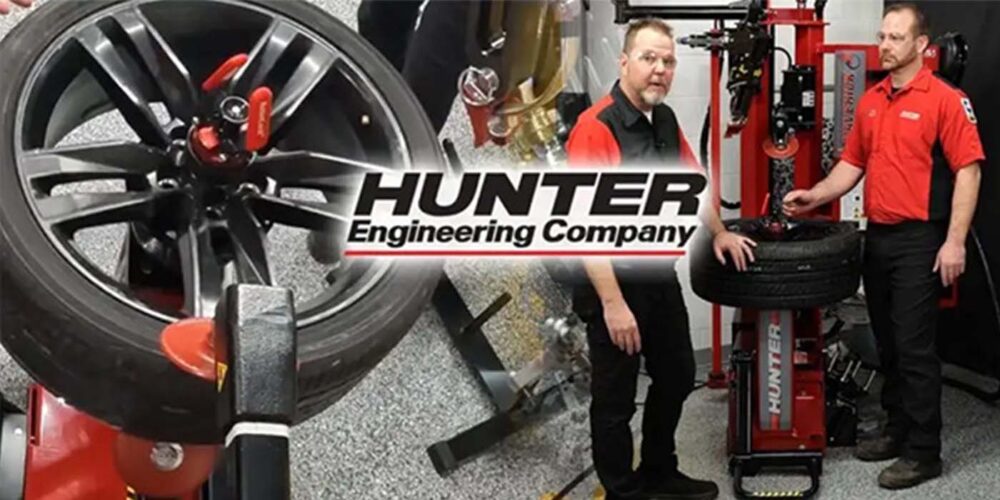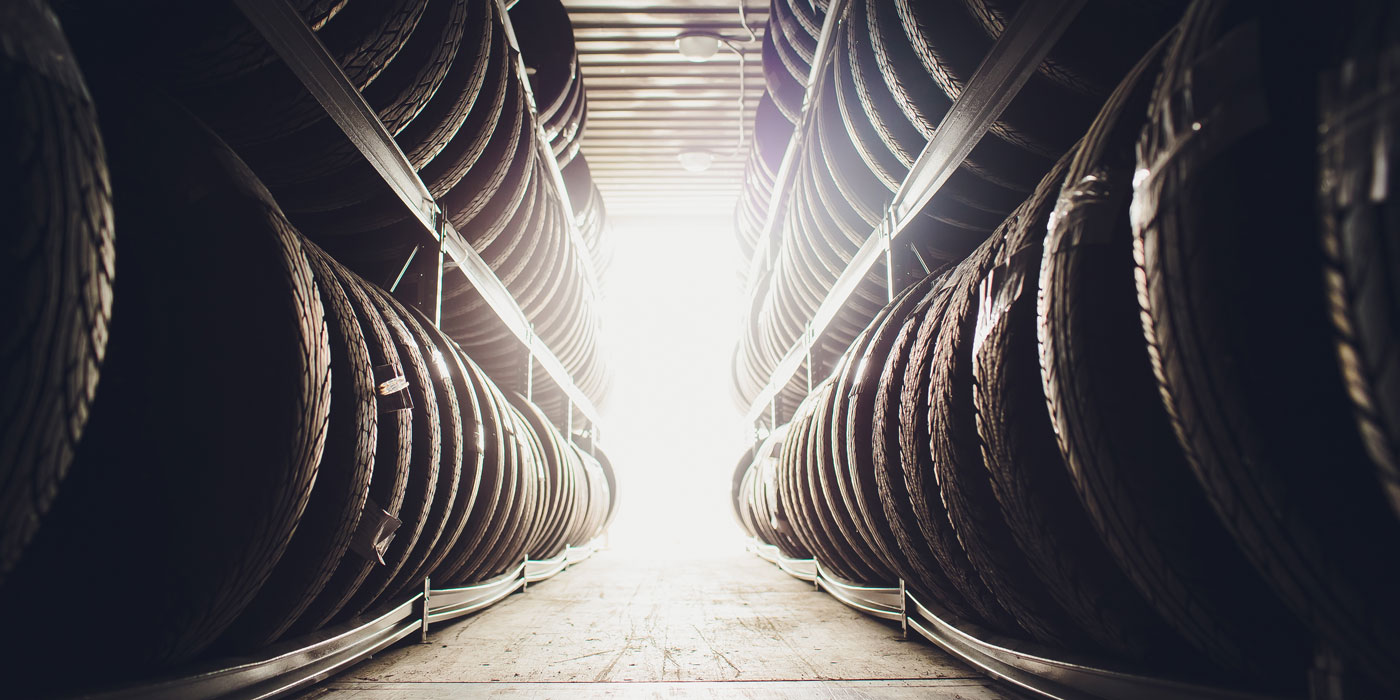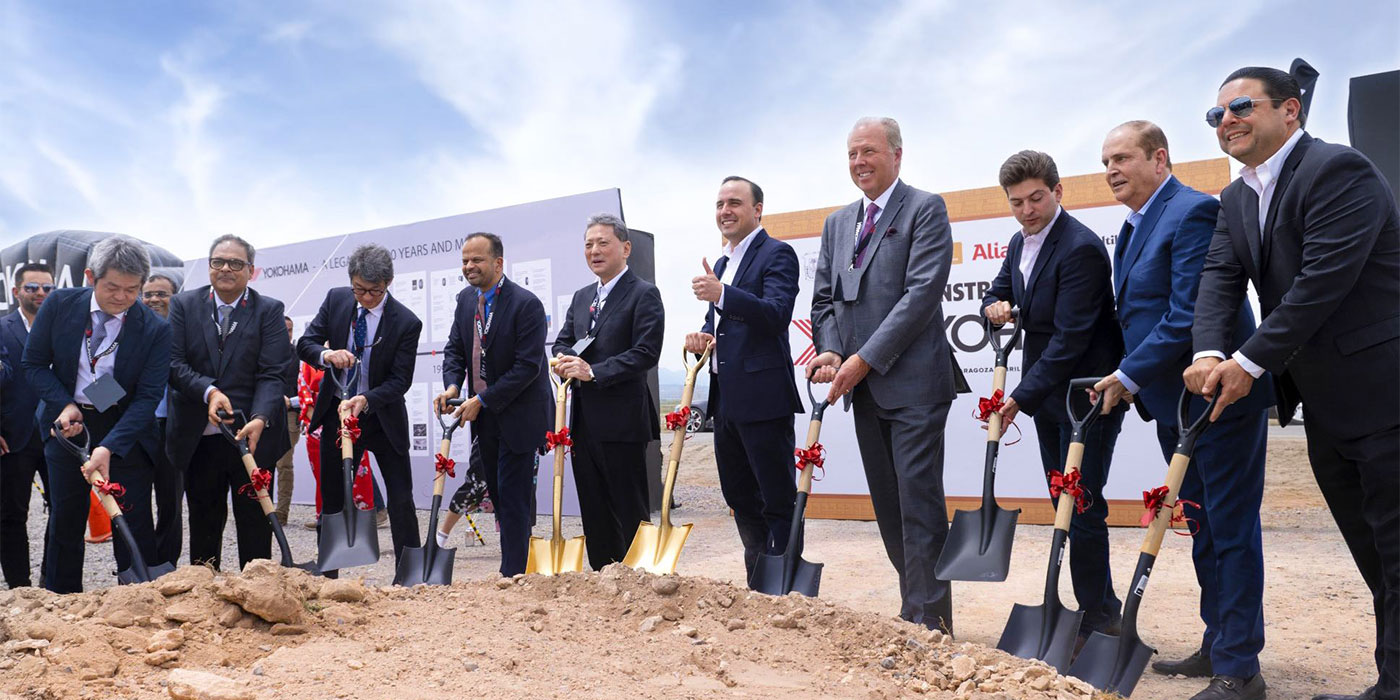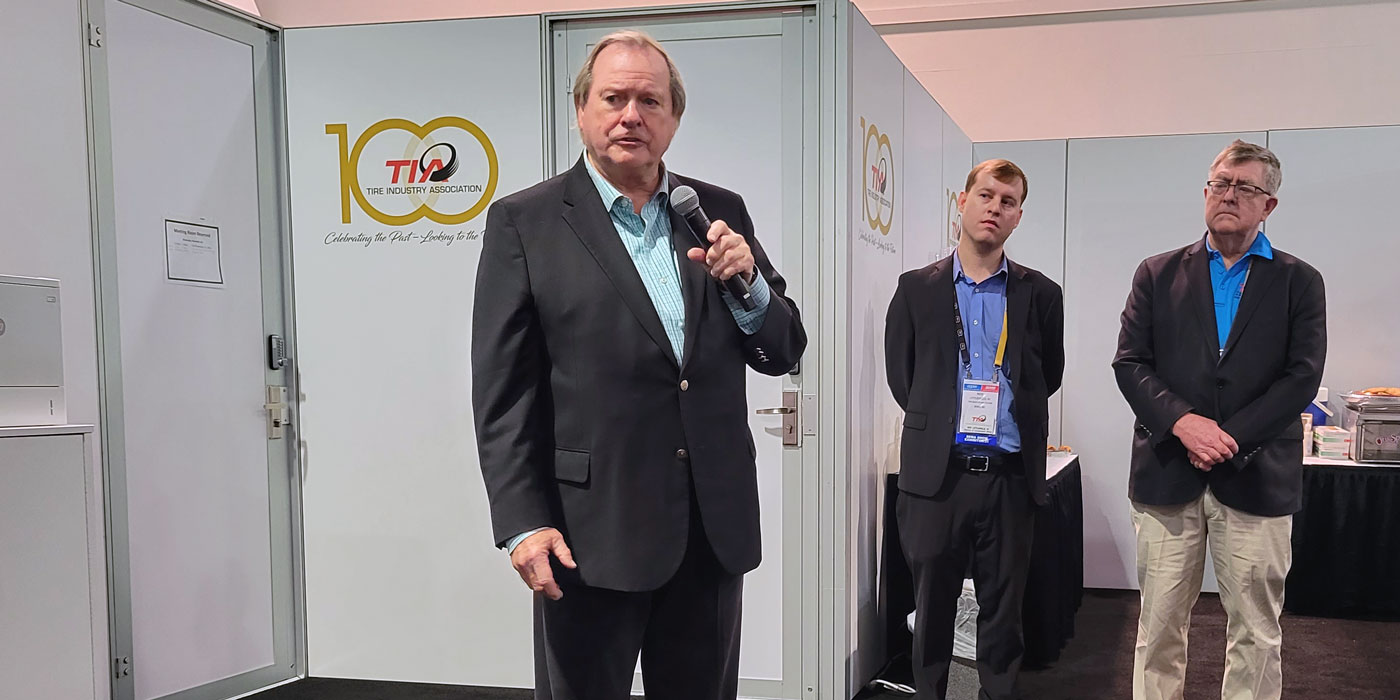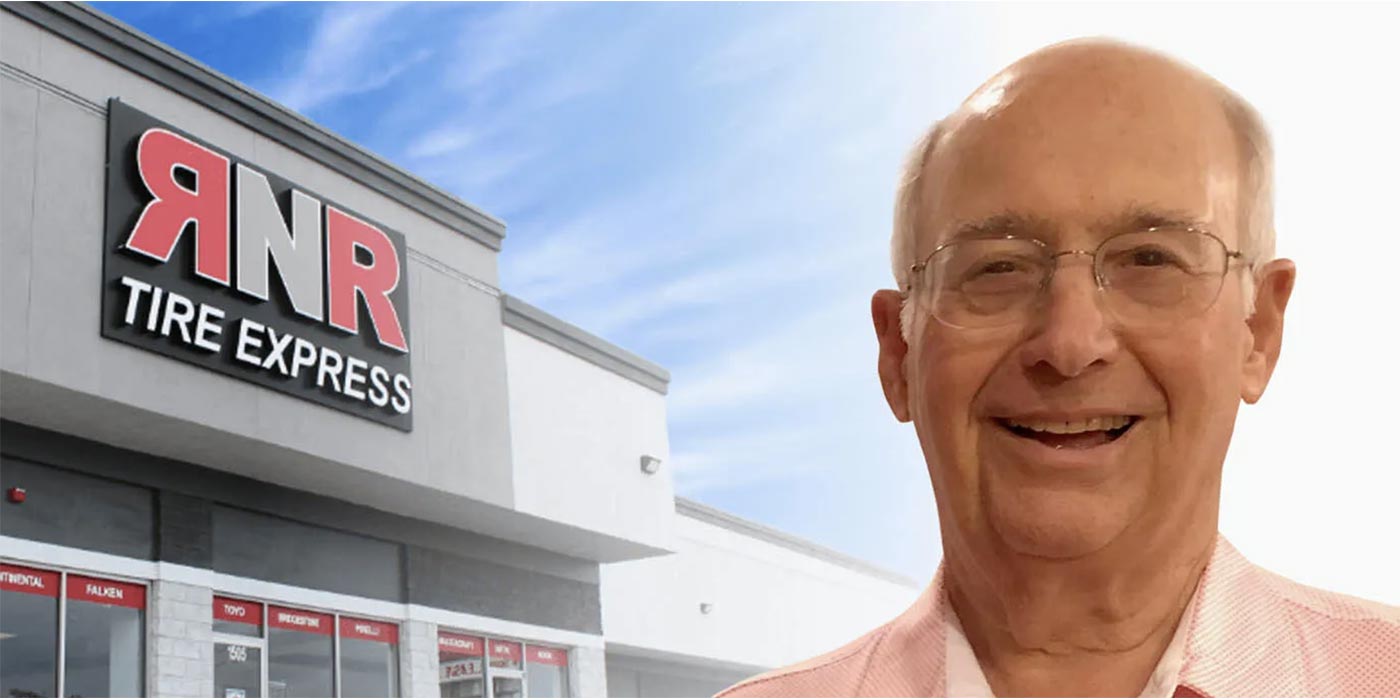According to figures made available to Tyres & Accessories, the share of pre-cured treads that have not been produced by Bandag, Marangoni/Ellerbrock, Kraiburg or Michelin was at 18% in the year 2000.
Five years later, in 2005, the “others” (see pie chart) had already gained 29 per cent of the European pre-cured retreading market. And there are market observers that predict within three to five years this group of companies will potentially supply up to 50 per cent of all pre-cured tread used in European retreading facilities. One of these observers is Joe Krimpenfort, who – as general manager of the material supplier Galgo Pre-Q Europe – sees his share of the European retreading market as being there for the taking.
“The old traditional elite is going to have a hard time,” says Joe Krimpenfort. By this elite he means the so-called “Big 4” group among European pre-cured tread suppliers. According to his prediction Marangoni, Bandag, Kraiburg and Ellerbrock – the Big 4 – plus Michelin (Recamic) will come under ever increasing pressure in Europe. Currently, these companies still possess about two-thirds of Europe’s market share. But this share is showing a strong pattern of decline, says the general manager from Galgo Pre-Q Europe. About seven years ago the same companies ruled over more than 80 per cent of Europe’s pre-cured tread market.
This trend alone is sufficient to give predictions for the coming years a good foundation. And Joe Krimpenfort’s predictions are that material suppliers from outside of Europe will increase their market share from about their current one third up to 50 per cent. Such a shift of market power and relevance will take place over the coming three to five years. This is a trend that will continue in the long-run, Joe Krimpenfort is convinced. But there are also other changes in the European retreading market linked to such developments that will (possibly) take place or are already taking place.
Over the past years there has been in particular one development that’s brought about these changes to the European retreading market, says the general manager who has run Galgo Pre-Q Europe since its founding in 2003 in Tongeren, Belgium: “In Europe the high-time of system suppliers is over; that’s all over.” In earlier years, when retreading a tyre with pre-cured treads still was a highly innovative production process and technology and know-how still had to be implanted into the markets, companies conducting business as suppliers of exclusive pre-cured retreading systems and materials completely dominated the market.
But today, with technologies established and growing international competition from many sides, the situation of a few suppliers dominating the market is about to become unhinged.
It is obvious which supplier he is referring to – Bandag. Krimpenfort himself worked for Bandag for many years; before he left the American retreading corporation he held the senior position of vice-president, Europe. Thus, according to Krimpenfort’s prediction, it is Bandag that stands to become the loser in the developments taking place in the European pre-cured retreading market. This trend has already been observed in recent years.
According to surveys, in 2000 Bandag held a 33% market share of the European pre-cured retreading market. By 2005 this had been whittled down to 22% and Krimpenfort estimates that currently the American corporation holds not more than 18%. The market share of the other companies from the “Big 4” group plus Michelin (Recamic) has remained relatively stable over the same period. Galgo Pre-Q Europe in turn is a “lean and mean organisation.”
The European subsidiary of the Mexican material supplier (Galgo holds about 60% of its domestic pre-cured treads and material for mould-cured retreading market) thus has been a much more versatile and cost efficient entity than the big corporations. Currently, Galgo Pre-Q Europe has two permanent employees: Joe Krimpenfort and his administrative manager Arturo BaledÓn – “We are Galgo.”
While Krimpenfort directly takes care of customers in the Benelux countries, Austria and Switzerland himself and is also forming new business relationships across the whole of the continent, other markets are serviced by agents that work for Galgo. Altogether, there are six “very experienced” sales representatives selling Galgo treads across Europe. Currently, the general manager is looking for a sales representative for the U.K. and Ireland.
This job vacancy is expected to be filled quickly. Furthermore, Krimpenfort will possibly hire a second sales representative for Southern Germany, underlying the ever growing importance of the German retreading market with its 80-odd retreading facilities.
When Krimpenfort speaks of the “end of system suppliers” and that, in particular, the “Big 4” will in the future have an increasingly hard time competing against companies from outside of Europe – companies that are currently not sitting in the “front row” – Krimpenfort obviously means that Galgo Pre-Q will be numbered amongst those companies coming to the fore. So, when the “others” gain a pre-cured tread market share of about 50 per cent within the next three to five years in Europe – an “ambitious but possible assumption” – then Galgo will hold about one third of this half share of the cake. Thus, in total this is about 15% of the whole European market for pre-cured treads, if Krimpenfort’s predictions prove to be right.
It is difficult to say where new tyre manufacturers will find their place in this prediction, says the general manager. As a matter of fact Bridgestone has taken over Bandag Inc. and in doing so has also taken over almost 20% of the European pre-cured tread market. But how the Japanese tyre giant is going to benefit in Europe from the billion dollar acquisition of Bandag remains to be seen.
Those responsible at Bridgestone’s European headquarters in Belgium are currently occupied with laying out a framework of how to integrate Bandag into the European Bridgestone organisation. Quite understandably, there has been no official comment from Bridgestone Europe at this early stage about how Bridgestone-Bandag is going to proceed in Europe. Most market observers are in complete agreement that Bridgestone took over Bandag because it was interested in the leading position of Bandag dealers in the North American truck tyre market; the acquisition wasn’t induced by Europe.
According to Joe Krimpenfort Michelin is the only new tyre manufacturer “that understands the whole culture of retreading.” The French tyre giant is a clear market leader in the combined European pre-cured and mould-cured retreading market with its two brands Remix (mould-cured) and Recamic (pre-cured). Statistics show that Michelin has a combined market share of about 30 per cent. But Michelin’s production partners only produce up to five per cent of all Europe’s retreaded truck tyres using Recamic pre-cured treads. Michelin retreads are foremost Remix mould-cured retreads produced by Michelin itself and then, a distant second, Recamic.
Attempts by other new tyre manufacturers such as Goodyear-Dunlop (Next Tread), Continental (ContiTread and Contire) or Pirelli (Novateck) to secure a foothold in the European retreading market have all been induced out of necessity, believes Krimpenfort, who also worked for Goodyear-Dunlop for 14 years (as managing director, Benelux). “They cannot afford to be absent, and the market forces them to be committed to retreading.” First of all, companies like those mentioned above have wanted to sell their new tyres. And only as a second step have they also offered retreading services and retreads in order to keep their valuable casings in the value-added process of their own corporate systems.
Whether material suppliers from the so-called “second row” will actually benefit from a growth taking place in the European retreading market appears to be uncertain – the reason for this: there is no such development; the European retreading market is barely developing at all, at least not in regards to its size. As it appears, this situation will not change fundamentally in the foreseeable future. In turn, if these second row companies gain market share in the European retreading market they do so because they succeed in what appears to be intense cut-throat competition. Currently, about 7.5 million truck tyres are retreaded in Europe per year (pre-cured plus mould-cured).
The share of retreads that are produced using pre-cure technology today is at around 60%. If long-term trends continue this figure is expected to drop down to 50% in the course of the coming years to 2010. Nevertheless, the European retreading market will slightly grow over the coming years up to 8 million units in total. But this growth is mainly induced because Eastern European markets are becoming “Westernised” and little by little are adapting to Western European markets. Thus growth is mainly taking place in the countries formerly in the Soviet Union’s sphere of influence. These states in Eastern Europe have “an emotional aversion against retreading,” Krimpenfort says, and makes clear that this is solely based on prejudice. These customer prejudices against what they consider to be used tyres at least seem to be comprehensible if we keep in mind that consumers in Eastern Europe had to live without any sort of branded products for so many decades, therefore now they sometimes prefer brand new tyres over retreads.
Their ignorance with regards to the possible cost cutting potential of retreads or the additional mileage of a casing – as a new tyre and then later on as a retreaded tyre – can be reduced by an “educational campaign,” the general manager believes. But for as long as road infrastructure is not developed like in Western Europe and so long as truck fleets cannot be compared with those in Western Europe, the share of retreads on the Eastern European truck tyre markets will remain flat. At the moment it is wishful thinking to believe there could be a retread ratio of up to 70%, as is the case in Scandinavia.
In order to be prepared for the changes taking place in the European retreading market, Galgo Pre-Q Europe is currently enlarging its warehouse capacity in Tongeren, Belgium, where the Mexican company’s distribution subsidiary is based. At the moment storage area – which is rented – is at about 1,300 m², but this will be increased by about 50 per cent by the end of the year, up to 2,000 m². In the same period the average total inventory will be increased from a current 500 tonnes to 700 tonnes of pre-cured treads. However, the inventory turnover will grow at a higher rate than the growth of inventory stock.
In order to better manage the logistics of a growing company the warehouse has to be expanded, Krimpenfort says.
Although the Mexican parent company, which was founded 55 years ago, also sells material for mould-cured retreading in Northern and Latin America, Galgo Pre-Q Europe isn’t selling these products on the European market. In Europe Galgo exclusively distributes pre-cured treads. Transportation in a non air-conditioned sea container for about three weeks is detrimental to the quality of unvulcanised rubber compounds and an air-conditioned container would be too expensive, says Krimpenfort. Nonetheless, Galgo Europe is selling cushion gum together with its pre-cured tread rubber; therefore there is a cold storage room in Galgo’s warehouse.
Currently, Galgo Pre-Q Europe generates about 50% of its annual turnover on the German tyre market, however the company does not disclose absolute turnover figures for either their European or their global ventures. After Germany, Scandinavia is the second most important market. When suppliers from outside of Europe have achieved their 50 per cent market share as predicted by Galgo’s European general manager, Europe will play an even more important role for the Mexican company, this is for certain.







